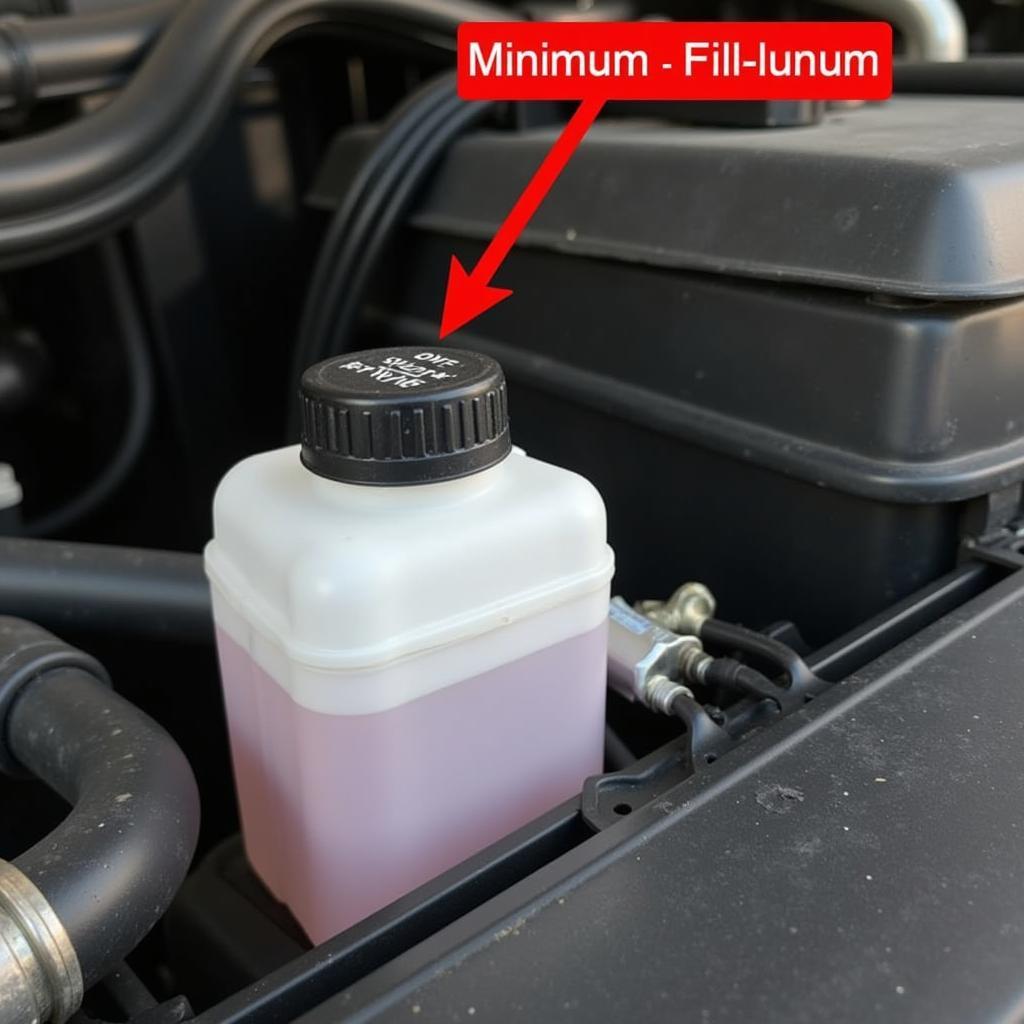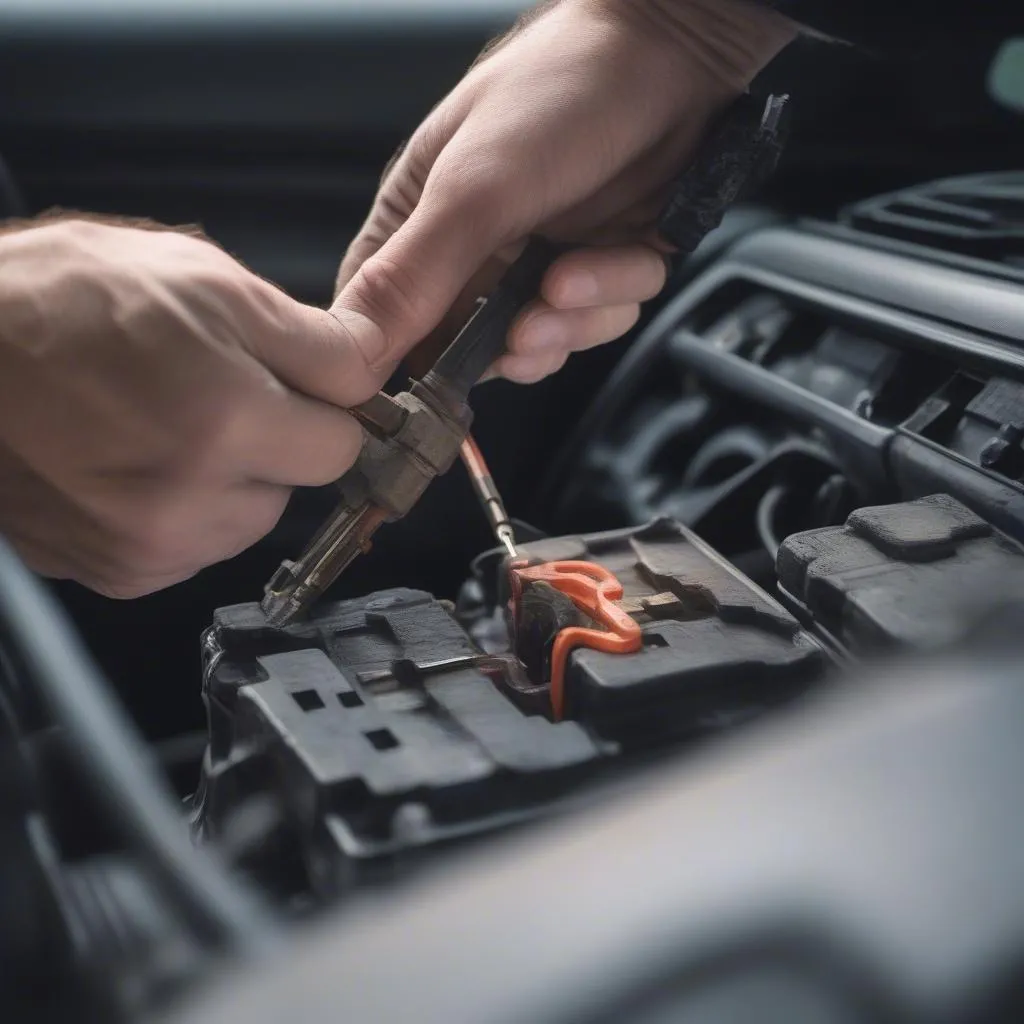Picture this: you’re cruising down the road in your trusty 2006 F150, enjoying the ride, when suddenly, that little red brake warning light on the dashboard decides to ruin your day by stubbornly refusing to turn off. Annoying, right? But more importantly, potentially dangerous. This persistent illumination signals a problem with your truck’s braking system that needs immediate attention.
This article will delve into the common culprits behind a stubborn brake warning light in a 2006 Ford F150 and guide you through the steps to diagnose and potentially fix the issue.
Understanding Your Truck’s Brake Warning System
Before we get our hands dirty (figuratively, of course), it’s essential to understand why that little light is freaking out. The brake warning light is part of your F150’s intricate self-monitoring system. Its job is to alert you to potential problems with your braking system, which could range from something as simple as a low brake fluid level to more complex issues like a malfunctioning ABS module.
Common Causes of a Brake Warning Light Staying On
Here’s where the detective work begins. Let’s look at the usual suspects behind a brake warning light that refuses to budge in a 2006 Ford F150:
- Low Brake Fluid Level: This is often the most common and easiest to fix culprit. Brake fluid is the lifeblood of your braking system, and as it gets low, it can trigger the warning light.
- Worn Brake Pads: Your brake pads wear down over time with use. When they reach a certain level of wear, the brake pad sensor will make contact, triggering the warning light to tell you it’s time for a replacement.
- Faulty Brake Light Switch: The brake light switch, located near the brake pedal, is responsible for turning on your brake lights when you press the pedal. A malfunctioning switch can not only leave you in the dark but also mess with the brake warning light.
- ABS Issues: The Anti-lock Braking System (ABS) is a crucial safety feature, and any problems with its components, such as the ABS module or wheel speed sensors, can trigger the warning light.
- Parking Brake Engaged: Yes, it sounds obvious, but sometimes the simplest answer is the right one. Double-check that your parking brake is fully disengaged.
 Brake Fluid Reservoir
Brake Fluid Reservoir
Troubleshooting the Brake Warning Light
Now that you know the potential villains, let’s move on to the action plan. Here’s a step-by-step guide to help you diagnose the problem:
- Check the Brake Fluid Level: Pop the hood and locate the brake fluid reservoir. Check the fluid level, ensuring it’s between the minimum and maximum lines. If it’s low, add the appropriate brake fluid (DOT 3 is common for the 2006 F150).
- Inspect the Brake Pads: If the fluid level is good, the next step is to check your brake pads. You’ll need to remove the wheels to get a clear view. Look for significant wear and tear. If the pads are thin or worn down to the metal indicators, it’s time for new ones.
- Test the Brake Light Switch: Locate the brake light switch, usually positioned above the brake pedal arm. With the ignition off, press and release the brake pedal while feeling for a distinct “click” from the switch. If the switch doesn’t seem to be engaging correctly, it might need replacing.
When to Seek Professional Help
If you’ve gone through these steps and the brake warning light is still shining bright, it’s best to call in the professionals. Issues with the ABS system, in particular, can be complex and require specialized diagnostic tools and expertise.
Remote Diagnostics and Software Solutions
Did you know that many brake warning light issues, particularly those related to the ABS module, can often be diagnosed and even repaired remotely using advanced software? Here at Car Diag Tech, we specialize in remote diagnostics and software solutions for vehicles, including the 2006 Ford F150. Our team of expert technicians can connect to your truck’s onboard computer system remotely, pinpoint the root cause of the problem, and often provide software updates or programming solutions to resolve the issue without you ever having to leave your driveway.
Keeping Your F150 Safe and Road-Ready
A constantly illuminated brake warning light is your truck’s way of telling you something is wrong. Ignoring it is like ignoring a screaming child – it’s only going to get worse (and louder). Regular maintenance, timely repairs, and utilizing the power of remote diagnostics can keep your 2006 Ford F150 running smoothly and, most importantly, keep you safe on the road.
FAQs
Q: Can I drive my F150 with the brake warning light on?
A: It’s strongly advised against driving with the brake warning light illuminated. It indicates a potential issue with your braking system, which could lead to reduced braking performance or even brake failure.
Q: How much does it cost to fix a brake warning light on a 2006 F150?
A: The cost can vary greatly depending on the underlying issue. A simple brake fluid top-up might cost a few dollars, while replacing a faulty ABS module could cost several hundred dollars.
Q: Can I check the brake light switch myself?
A: Yes, you can visually inspect the switch and test for a clicking sound when pressing the brake pedal. However, replacing the switch might require some mechanical expertise.
Q: Are there any preventative measures to avoid brake warning light issues?
A: Regular brake system inspections, timely fluid flushes, and adhering to your F150’s recommended maintenance schedule can help prevent many brake-related issues.
Q: Does Car Diag Tech offer remote diagnostics for other vehicle makes and models?
A: Yes, we specialize in remote diagnostics and software solutions for a wide range of vehicle makes and models. You can contact our team to inquire about your specific vehicle.

